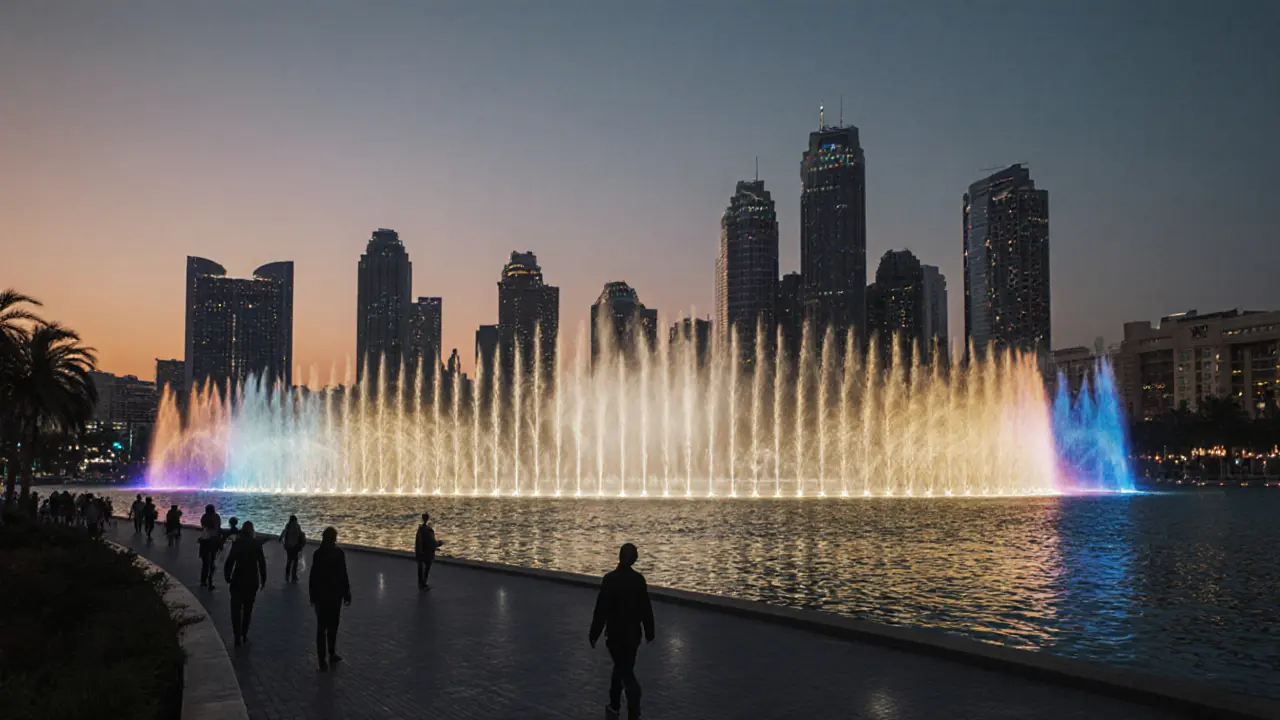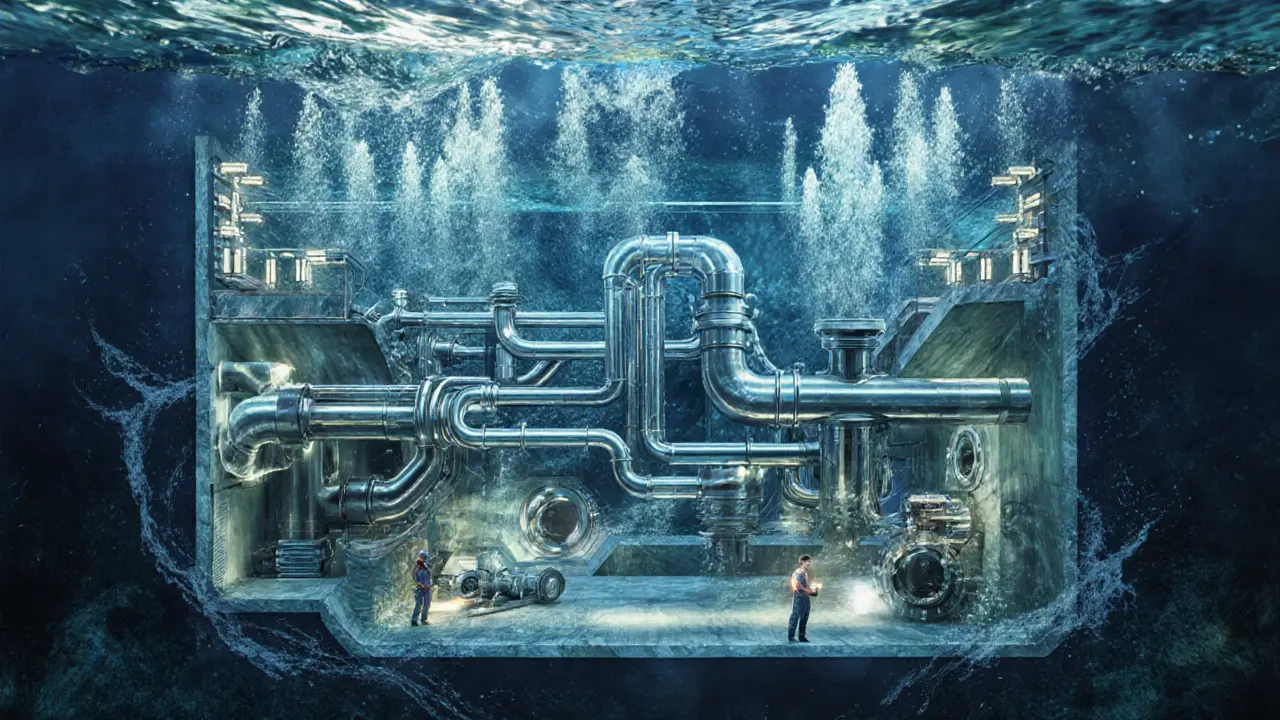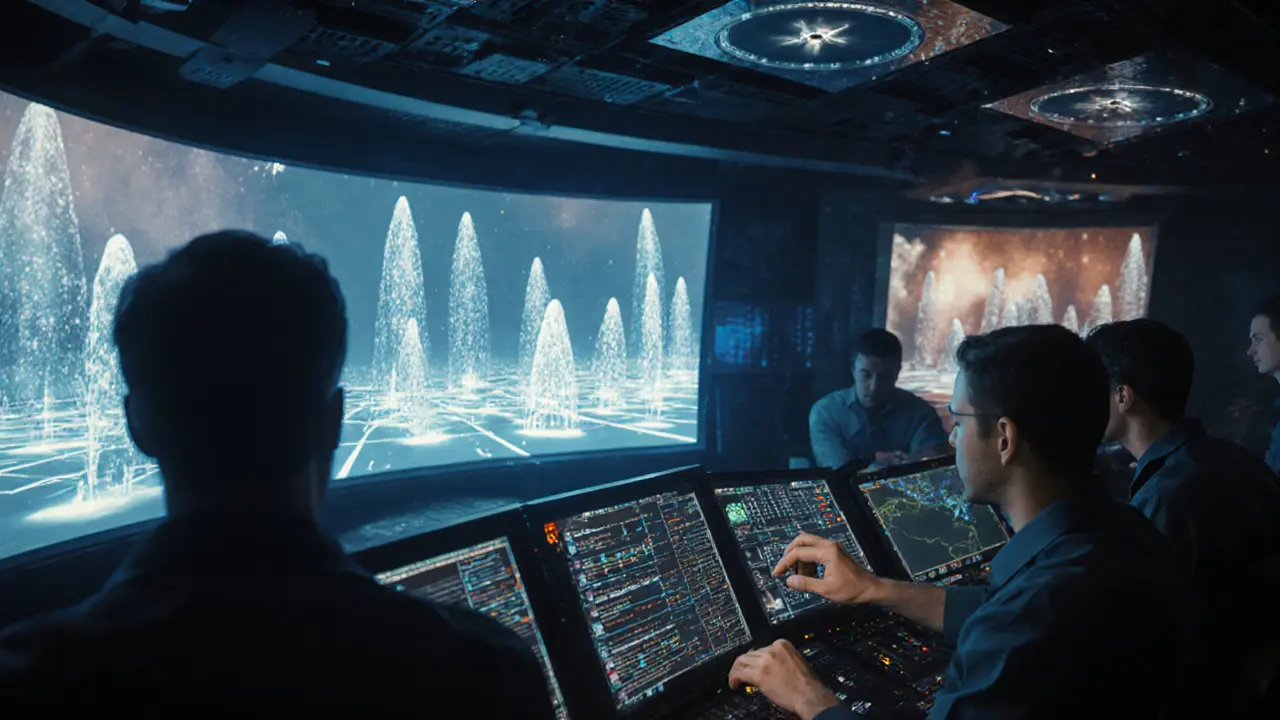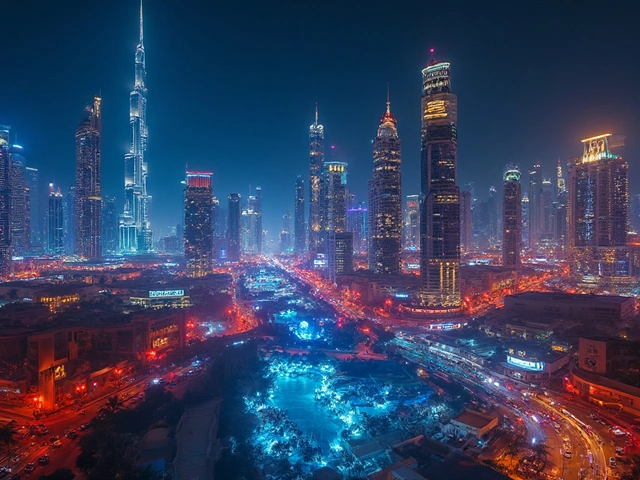
The Dubai Fountain doesn’t just shoot water into the air-it tells stories. Every night, over 6,600 lights and 25 colored projectors turn 22 acres of Burj Khalifa Lake into a living canvas. But behind those dazzling arcs and synchronized bursts is a system so complex, most visitors have no idea what’s really happening beneath the surface.
How the Dubai Fountain Works
The Dubai Fountain isn’t powered by magic. It’s powered by 292 powerful nozzles, each capable of shooting water up to 150 meters high-that’s taller than the Statue of Liberty. The water comes from a 30-million-liter reservoir hidden beneath the lakebed. Pumps push water through stainless steel pipes at speeds of up to 60 kilometers per hour. The entire system uses 100% recycled water, drawn from the lake itself and filtered continuously.
What makes it different from other fountains? It’s not just height or volume-it’s precision. Each nozzle is individually controlled by computer systems that respond to music in real time. The show runs on a custom-built software platform developed by WET Design, the same team behind the Bellagio fountains in Las Vegas. But Dubai’s version is five times larger and uses 10 times more nozzles.
The Music Behind the Movement
The fountain doesn’t just dance-it listens. Every performance uses a curated playlist of over 1,000 songs, ranging from classical Arabic pieces like Ya Habibi to global hits like Bohemian Rhapsody and Uptown Funk. The music isn’t randomly chosen. Each track is manually synced to the choreography. Sound engineers break down every beat, swell, and pause, then map it to specific nozzle patterns, light colors, and water heights.
For example, during Arabian Nights, the water rises slowly in soft waves, mimicking desert winds. When the drums kick in, the nozzles fire in rapid bursts like falling rain. The lasers, which span 1,000 meters across the lake, shift from gold to deep blue to match the mood. A single 10-minute show can involve over 20,000 unique water and light commands.
The Hidden Tech: More Than Just Water
What you see is only half the story. Underwater, there are 22 high-pressure pumps, each rated at 160 horsepower. These pumps are housed in a 100-meter-long tunnel beneath the lake, accessible only to maintenance crews. The nozzles themselves are made from aerospace-grade titanium to resist corrosion from saltwater and chemicals.
There are also 1,000 LED lights embedded in the fountain’s base. These aren’t standard bulbs-they’re custom-designed waterproof units that can change color in milliseconds. Each light has its own microprocessor, allowing for pixel-level control. That’s why you can see ribbons of light curling around water jets like glowing silk.
The entire system is monitored by 120 sensors that track water pressure, temperature, wind speed, and even humidity. If the wind picks up above 25 km/h, the system automatically reduces the height of the tallest jets to prevent water from splashing onto nearby walkways. This isn’t just for show-it’s for safety.

Choreography: A Dance of Water and Light
There’s no choreographer in a studio with a clipboard. Instead, a team of engineers, animators, and sound designers work together in a control room that looks more like a NASA mission center. They use 3D simulation software to test every movement before it goes live. A single sequence might take weeks to perfect.
One of the most complex routines is Alabaster, a piece inspired by traditional Emirati poetry. It starts with a single thin jet rising like a candle flame. Then, 12 more jets join in, forming a spiral that slowly expands outward. At the same time, the lights shift from white to soft amber, and a traditional oud melody swells in the background. It’s designed to feel like a memory unfolding.
These routines aren’t automated. They’re hand-coded. Every nozzle’s timing, every light’s fade, every pause between bursts is manually programmed. There’s no AI generating the show-it’s all human craftsmanship.
When and Where to See It Best
The Dubai Fountain performs every 30 minutes from 6 p.m. to 11 p.m. daily. But not all spots offer the same experience. The best views aren’t from the Burj Khalifa’s observation deck-they’re from the Dubai Mall’s waterfront promenade. That’s where you get the full 360-degree effect: water rising in front of you, lasers sweeping overhead, and reflections dancing on the lake.
If you want to avoid crowds, come during the first show of the evening. Locals often skip the rush and show up at 6 p.m. sharp. You’ll get a quiet bench, no phone-waving tourists, and the full sound system without echo from nearby restaurants.
On weekends, there’s a special 15-minute extended version that includes rare songs like Alf Leila wa Leila and Ya Salam. These performances are never advertised-just show up and see if you’re lucky.

What Happens After the Show?
Once the lights dim and the last jet falls, the system doesn’t just shut off. Every nozzle is flushed with fresh water to prevent mineral buildup. The pumps are checked for wear. The lights are tested for dimming. Maintenance crews work through the night, repairing any clogs, replacing burnt-out LEDs, and recalibrating sensors.
It takes 30 people to run the fountain daily. And every week, one technician climbs into the underwater tunnel to inspect the pipes by hand-wearing a dry suit, carrying a flashlight, and navigating narrow passageways filled with swirling water. There’s no room for error. One leak could shut down the entire system for days.
Why It’s More Than a Tourist Attraction
The Dubai Fountain isn’t just about spectacle. It’s a symbol of precision engineering, cultural pride, and technological ambition. It’s one of the few public spaces in Dubai where locals and tourists sit side by side, silent and still, watching water dance.
It’s also a quiet act of defiance against the idea that luxury must be loud. No screaming rides. No flashing billboards. Just water, light, and music-simple, elegant, and unforgettable.
Every time you see it, you’re witnessing a blend of centuries-old artistry and cutting-edge tech. And the best part? It’s free. No ticket. No line. Just a moment, under the stars, where water becomes poetry.
How long does the Dubai Fountain show last?
The standard Dubai Fountain show runs for about 5 minutes. On weekends, there’s an extended version that lasts up to 15 minutes. Shows happen every 30 minutes from 6 p.m. to 11 p.m. daily.
Is the Dubai Fountain free to watch?
Yes, the Dubai Fountain is completely free to watch. You don’t need a ticket. The best viewing spots are along the Dubai Mall waterfront promenade or on the public walkways around Burj Khalifa Lake.
What time is the best to see the Dubai Fountain?
The best time is the first show at 6 p.m. It’s quieter, the sky is still light enough to see the colors clearly, and you avoid the evening crowds. For a more dramatic experience, watch the last show at 11 p.m.-the lights stand out more against the dark sky.
Can you see the Dubai Fountain from inside Dubai Mall?
Yes, you can see the fountain from inside Dubai Mall through the large glass windows facing the lake. There’s also a dedicated viewing area near the main entrance with benches and speakers that broadcast the music. It’s a great option if it’s raining or too hot outside.
Does the Dubai Fountain ever shut down?
The fountain rarely shuts down. It runs every day unless there’s extreme weather-like wind speeds over 25 km/h, heavy rain, or system maintenance. Occasionally, it’s turned off for special events like New Year’s Eve or national holidays, but these are rare and usually announced in advance.



